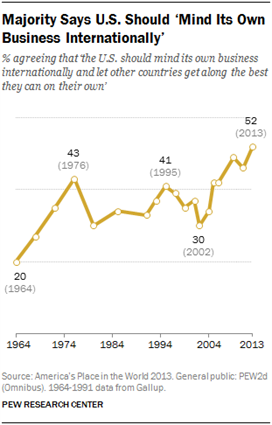Just out from the NYT’s Fed watcher Appelbaum:
Fed’s Plan to Taper Stimulus Effort Not Expected Until Next Year
Federal Reserve officials are in no hurry to retreat from their bond-buying campaign to stimulate the economy and are likely to postpone any cuts to the program until next year, according to public statements by Fed officials and interviews with some of them.
Job growth has strengthened in recent months, and Fed officials expect continued improvement in the coming year. The Fed’s chairman, Ben S. Bernanke, predicted in June that the Fed would taper its purchases by the end of this year, and officials say they still could announce such a cut next week, when the Fed’s policy-making committee is scheduled to hold its final meeting of the year.
But influential Fed officials see little harm in postponing the decision, particularly compared with the risks of pulling back too soon…
At the same time, out from the WSJ’s Hilsenrath:
Fed Closes In On Winding Down Bond Purchasing
Federal Reserve officials are closer to winding down their controversial $85 billion-a-month bond-purchase program, possibly as early as December, in the wake of Friday’s encouraging jobs report.
Fed Chairman Ben Bernanke will have to build consensus among officials about how soon to pull back on a program that has been the center of market attention for months and whose effectiveness isn’t wholly clear. Many are getting more comfortable with starting a delicate process of winding the program down, though disagreements about timing and strategy could emerge, according to public comments and interviews with officials.
The Fed’s next policy meeting is Dec. 17-18 and a pullback, or tapering, is on the table, though some might want to wait until January or even later to see signs the recent strength in economic growth and hiring will be sustained. On Tuesday, officials go into a “blackout” period in which they stop speaking publicly and begin behind-the-scenes negotiations about what to do at the policy gathering.
One important consideration: Are investors prepared for a move? Talk of pulling back earlier this year jarred stock and credit markets. On Friday they seemed to take the prospect of a pullback in stride.
Who is right? Are both right? Are both wrong? According to some, especially those who manage other people’s money, and are paid only if the multiple expansion myth continues, any news will be good news, and all bad news is priced in.
Scott Minerd, global chief investment officer for Guggenheim Partners LLC, said, “It doesn’t matter” whether the Fed makes a decision on tapering this month or in 2014. “It’s priced in,” he said.
Sure, nothing matters, and the Taper – that tiny reduction in flow by $10 billion from $85 billion to $75 billion – was priced in in May also, until the Emerging Market nearly suffered a cardiac attack and the US bond market imploded…
Then again, does anyone even care? Far more relevant is what is the Fed’s price target for the Monday and year end close.
Also, how sad is it that this is what financial journalism has devolved to: when will the economist PhD overlords decree to (minimally) reduce their central-planning of the US economy and capital markets (and yes, Stalin must be spinning in his grave…)?
All completely meaningless questions to distract the population from the fact that while the markets rise to ever higher record highs, the social fabric in the US and globally stretches ever thinner…







via Zero Hedge http://feedproxy.google.com/~r/zerohedge/feed/~3/7cyOtjkKuGE/story01.htm Tyler Durden
![]()







 On
On Statements from the defense maintained that Ramos
Statements from the defense maintained that Ramos